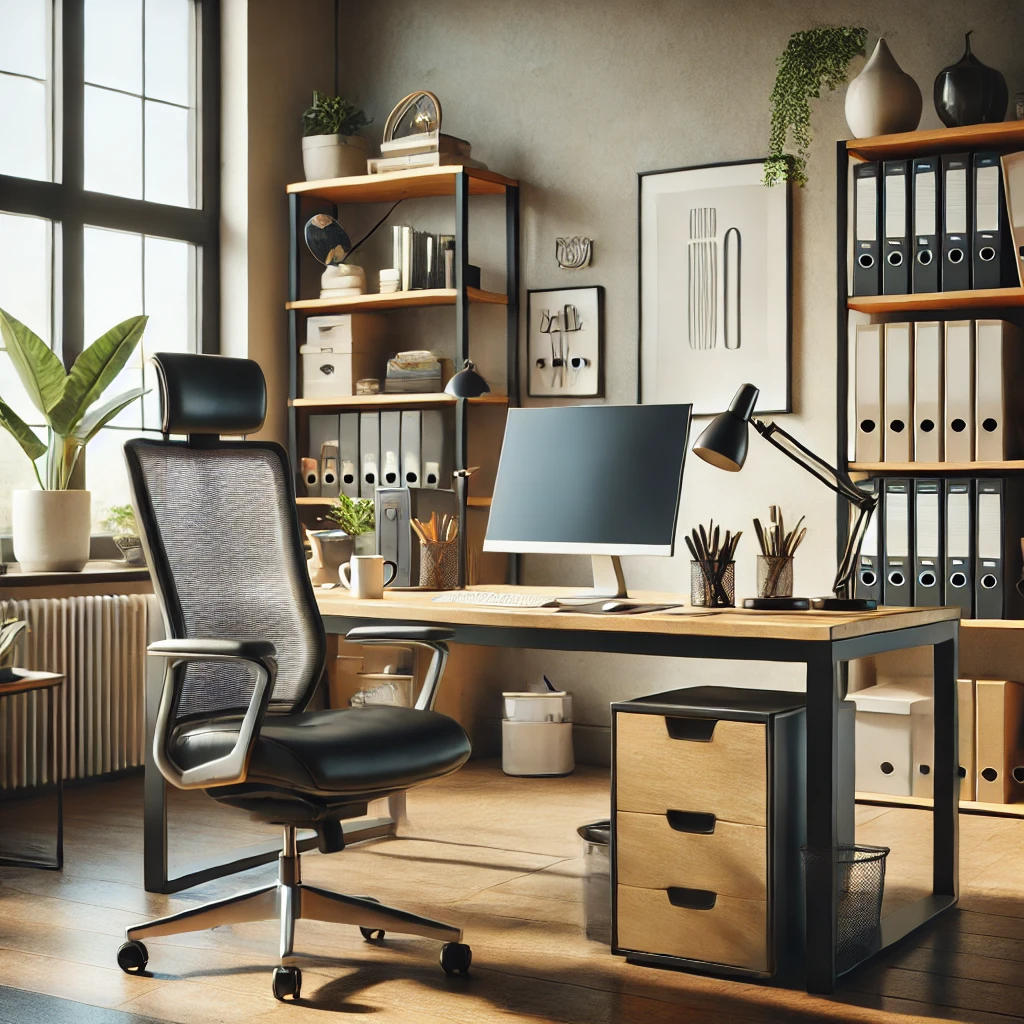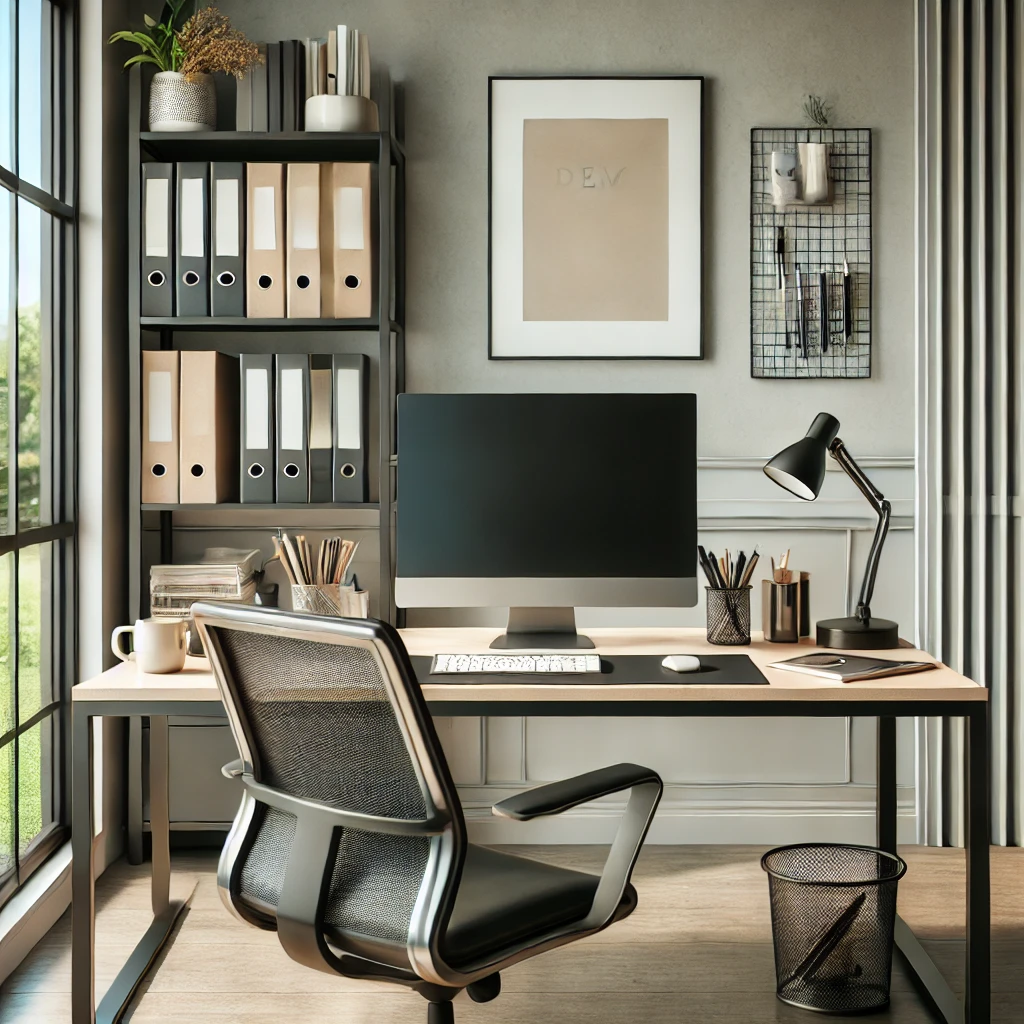Whether you’re redecorating your home office or looking for ideas for an elegant professional desk, this FAQ will answer your questions about designer desks.

Designer desk FAQ
From choosing materials to storage solutions, and best practices for optimizing space and ergonomics, we provide all the necessary information to create a desk that is both functional and aesthetically pleasing.
1. What is a designer desk?
A designer desk is a piece of furniture that combines functionality, modern aesthetics, and quality materials. It stands out with its clean lines, contemporary shapes, and integration of innovative features for an optimized workspace.
2. What materials are commonly used for designer desks?
Designer desks are often made of solid wood, tempered glass, metal, or composite materials. Some models also use recycled or sustainable materials, reflecting a growing eco-friendly trend.
3. How do I choose a designer desk suitable for my workspace?
The choice depends on the size of your space, your working style, and your storage needs. A compact desk with integrated storage is ideal for small spaces, while an L-shaped or standing desk may be preferred for larger areas.
4. What are the advantages of a glass desk?
A glass desk adds a modern and light touch to the space, giving a sense of openness. It is also easy to maintain but requires regular cleaning to avoid fingerprints.
5. What are the current trends in designer desks?
Current designer desk trends focus on simplicity, clean lines, and technological integration. Modular desks, eco-friendly materials, and standing desks are also very popular.
6. How to integrate technology into a designer desk?
Many designer desks incorporate features such as USB ports, cable management systems, or wireless charging surfaces. These functionalities help keep the workspace organized and clutter-free.
7. What is the importance of ergonomics in a designer desk?
Ergonomics are crucial for preventing health issues related to office work, such as back or neck pain. An ergonomic designer desk should provide space for an adjustable chair, screen support at the correct height, and possibly the option to work while standing.
8. How to choose the right size for a designer desk?
The size of the desk depends on the available space and its intended use. For a small space, a compact or wall-mounted desk is ideal. For heavy use, a larger desk with ample workspace is recommended.
9. What types of storage are recommended for a designer desk?
Integrated drawers, modular shelves, and hidden storage solutions are often preferred. The goal is to keep the workspace uncluttered while keeping everything within reach.
10. Where to buy quality designer desks?
Specialized stores like Made.com, Habitat, or premium brands like Herman Miller and Knoll offer a wide selection of designer desks. It is recommended to compare options both online and in-store to find the desk that suits your needs.
11. What is the difference between a designer desk and a traditional desk?
A designer desk stands out due to its high-quality materials, attention to aesthetic details, and often better integration of modern functionalities, unlike a traditional desk which may be more conventional and basic.
12. Is it possible to combine a designer desk with other furniture styles?
Yes, mixing a designer desk with furniture from different styles can create a unique aesthetic. Just ensure to maintain visual consistency by playing with materials and colors.
13. How to maximize space in a small office with a modern design?
Use wall-mounted or foldable desks, vertical storage solutions, and multifunctional desks to optimize space. Light colors and reflective materials like glass can also visually enlarge the space.
14. What are the advantages of investing in a designer desk?
A designer desk not only offers a refined aesthetic but also superior durability and modern features that enhance productivity and comfort at work.
15. How to maintain a designer desk?
Maintenance depends on the materials. Wood may require specific care, such as oiling or waxing. Glass should be cleaned regularly to avoid streaks. Metal surfaces must be protected from moisture to prevent rust.
16. What accessories complement a designer desk?
Accessories such as designer desk lamps, ergonomic mouse pads, laptop stands, and cable organizers are essential to complete a modern workspace.
17. What budget should be expected for purchasing a designer desk?
The budget varies depending on the quality and brand. A quality designer desk can cost between €300 and €2,000, or even more for high-end or custom models.
18. Can you order a custom-made designer desk?
Yes, many companies offer custom desk creation services, allowing the desk to be perfectly adapted to the space and the user’s specific needs.
19. What criteria should be considered when purchasing a designer desk online?
It’s important to check the dimensions, material quality, customer reviews, and return policies. Also, ensure that the photos accurately represent the actual products.
20. How to set up a designer workspace to promote concentration?
Create a clean space by minimizing visual distractions. Use calming colors, ensure good natural lighting, and choose furniture that promotes ergonomic posture for an environment conducive to concentration.
Conclusion:
A designer desk can transform your workspace into a place that inspires productivity and well-being.
By considering the tips and information in this FAQ, you will be better equipped to choose a desk that not only meets your functional needs but also integrates harmoniously into your environment.
Investing in a designer desk means investing in your comfort and daily efficiency.
